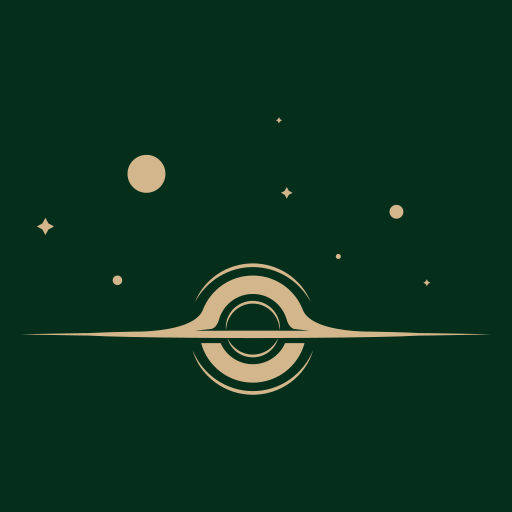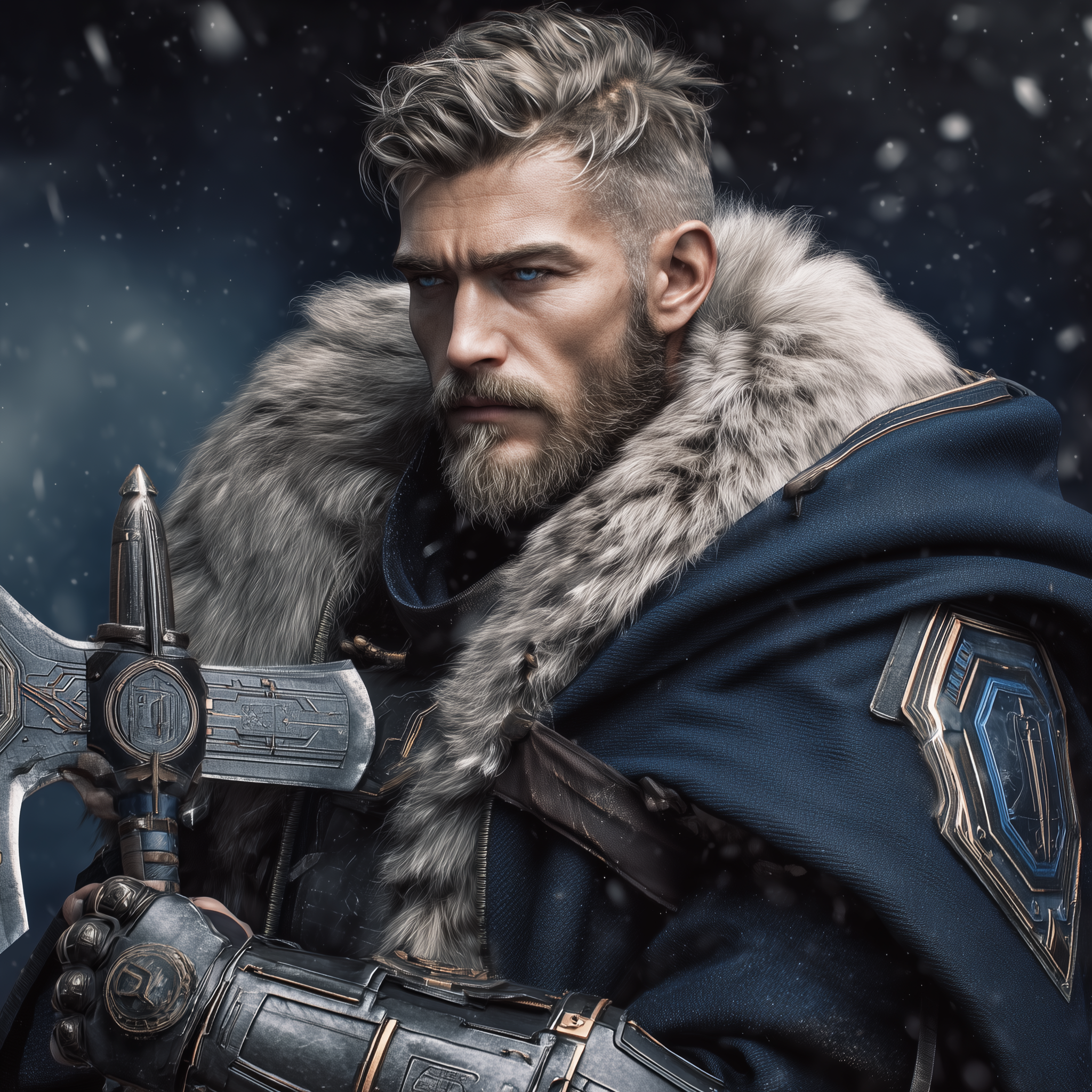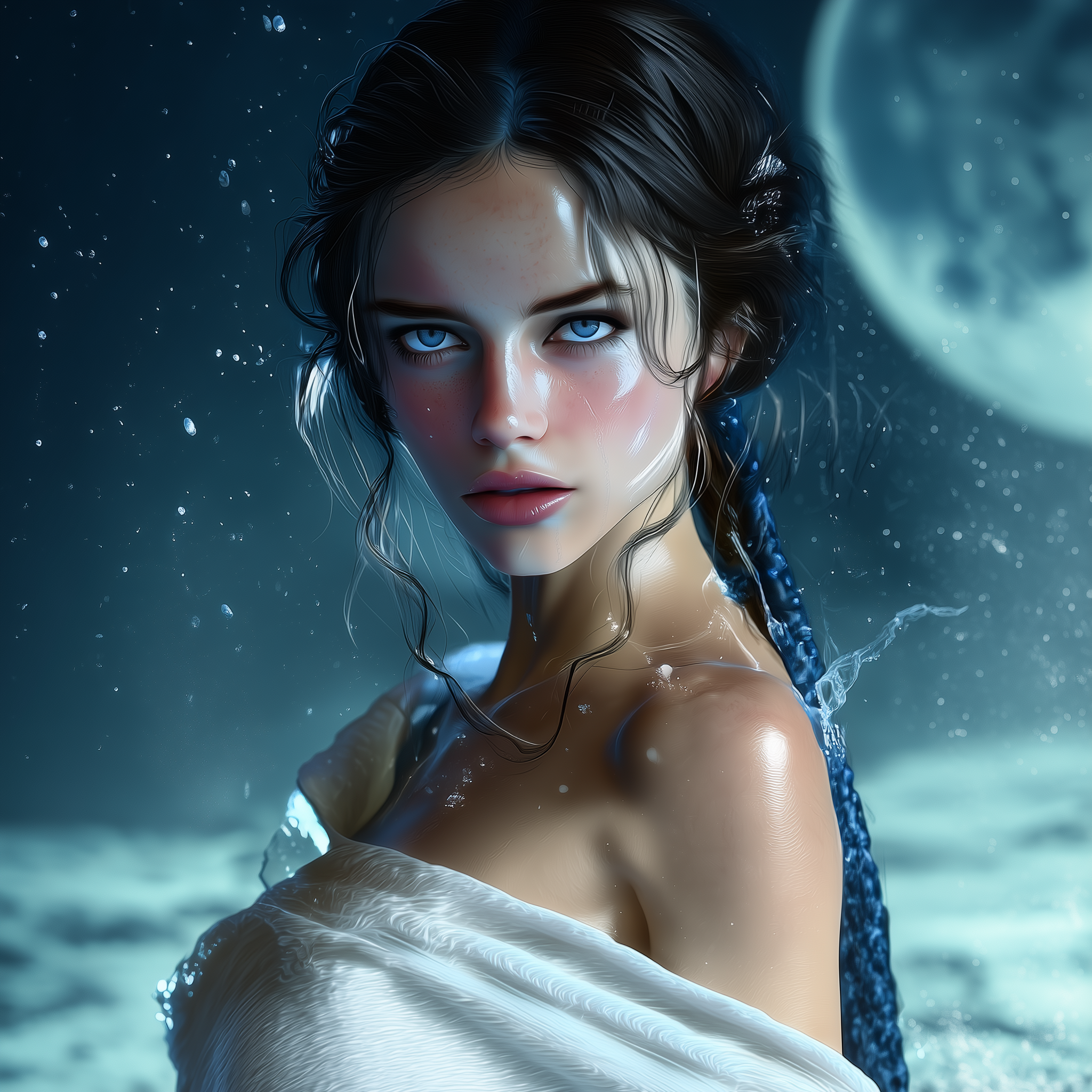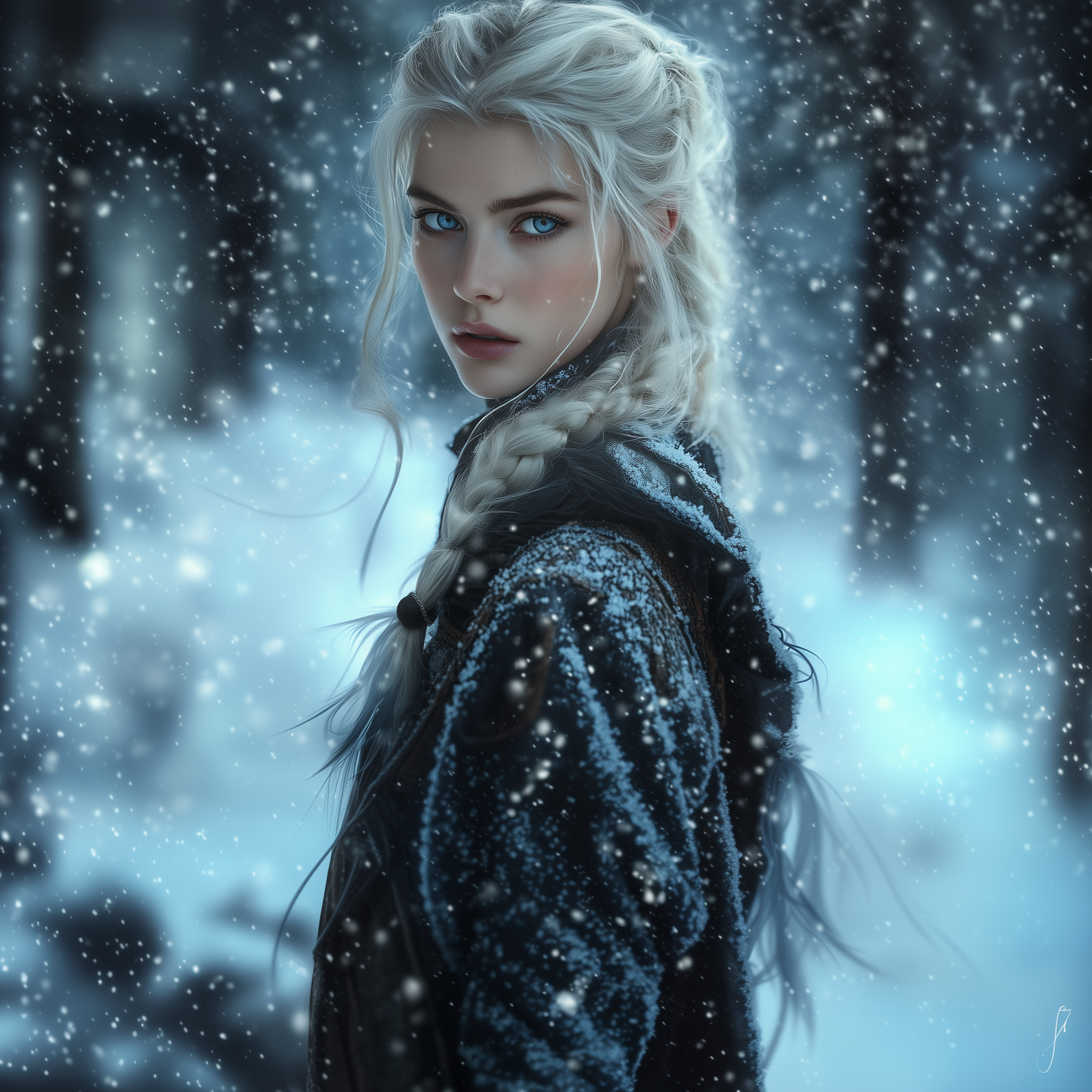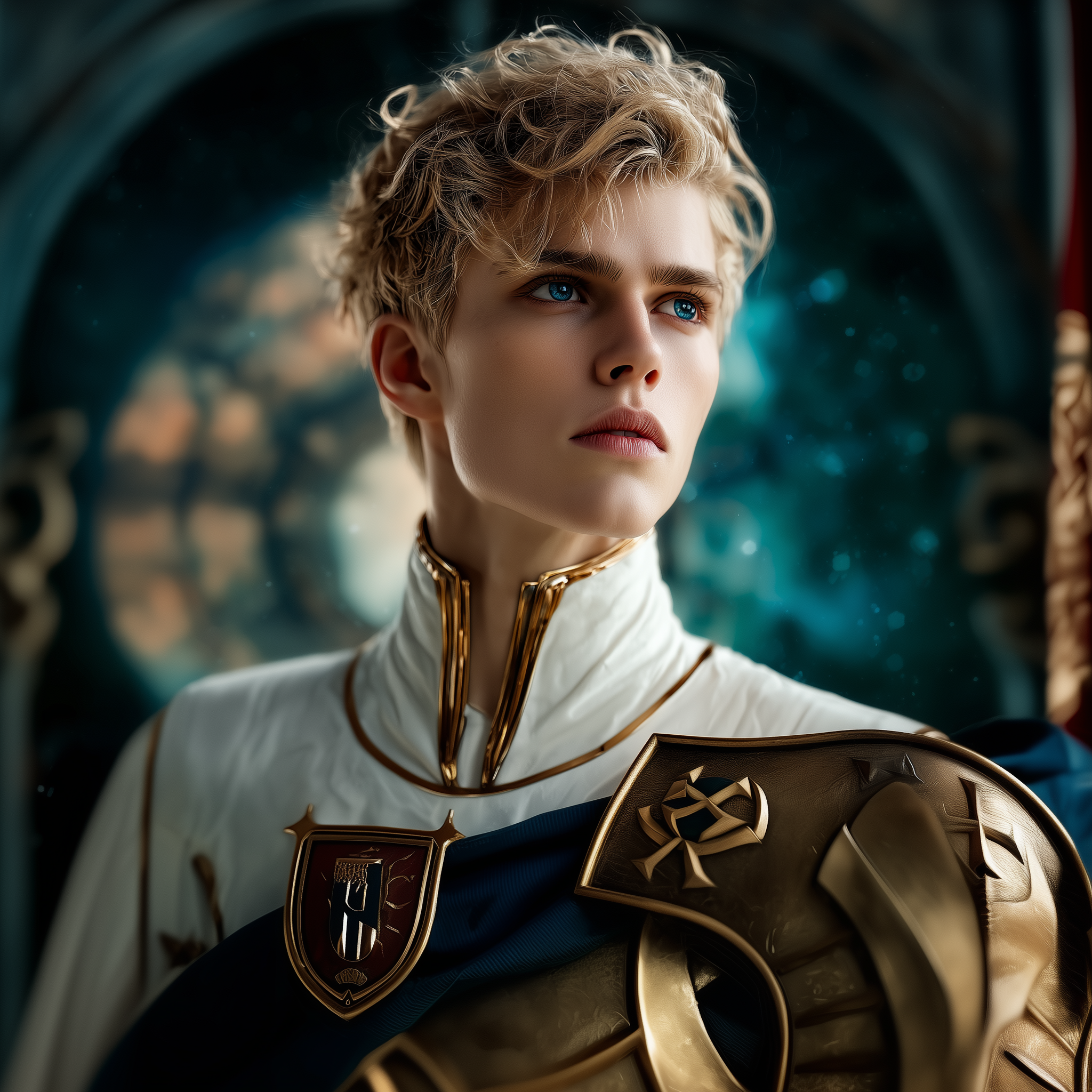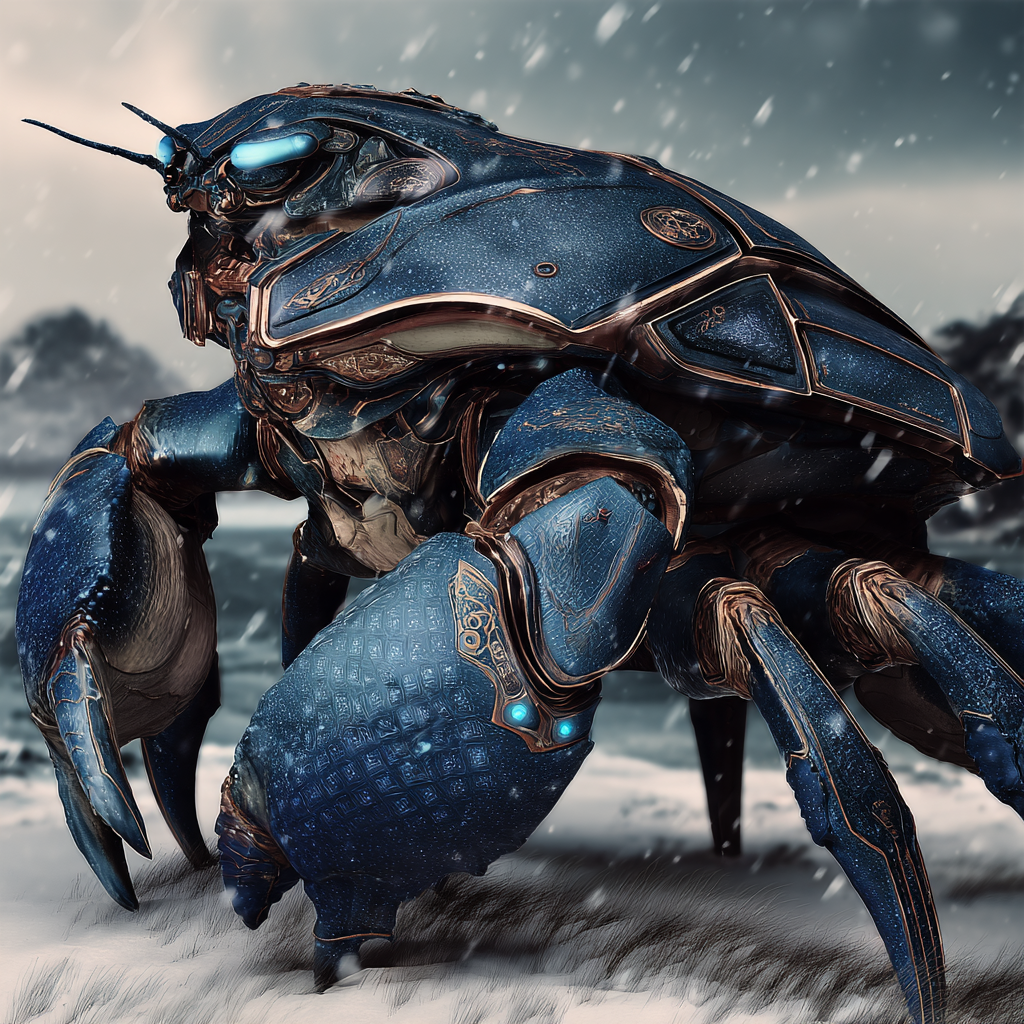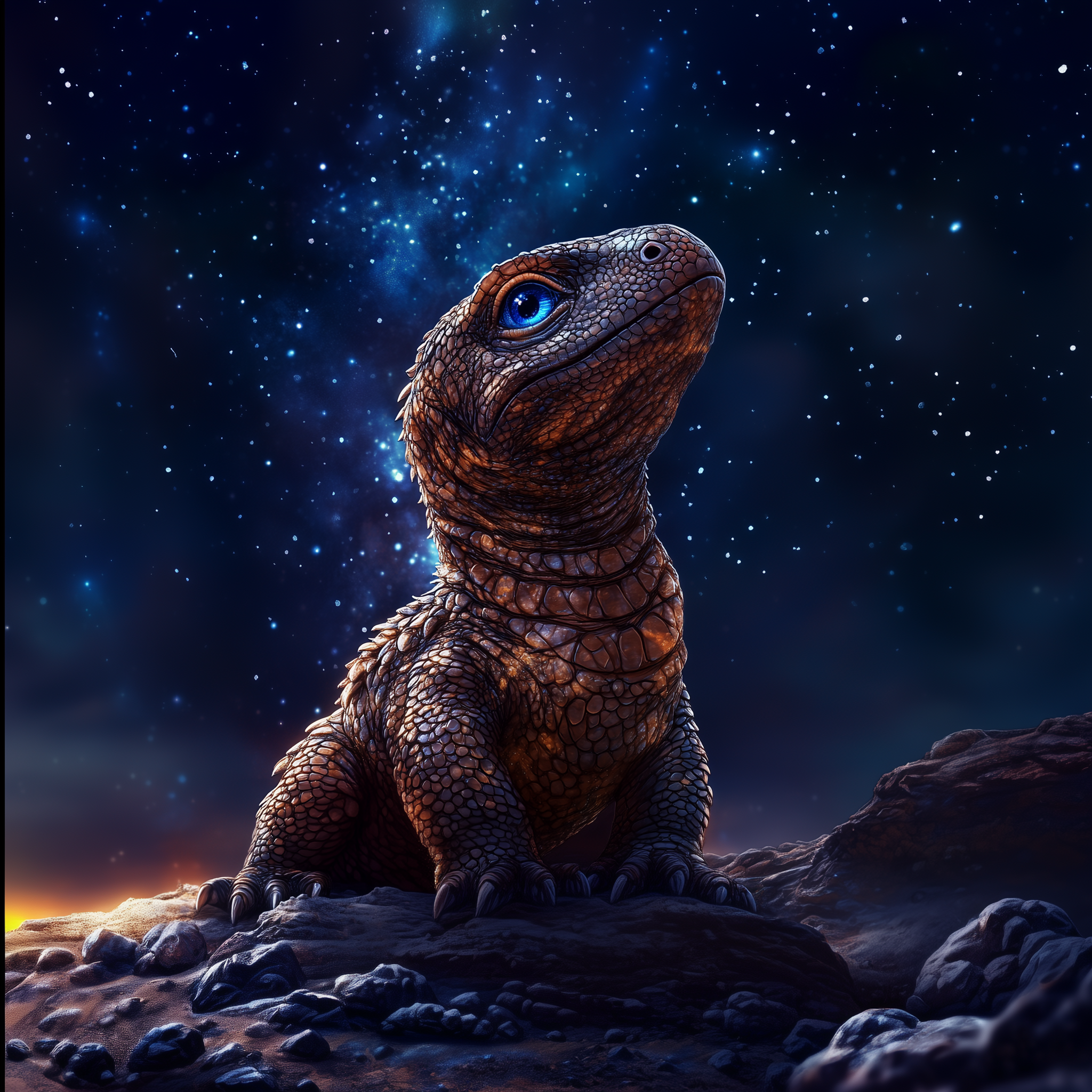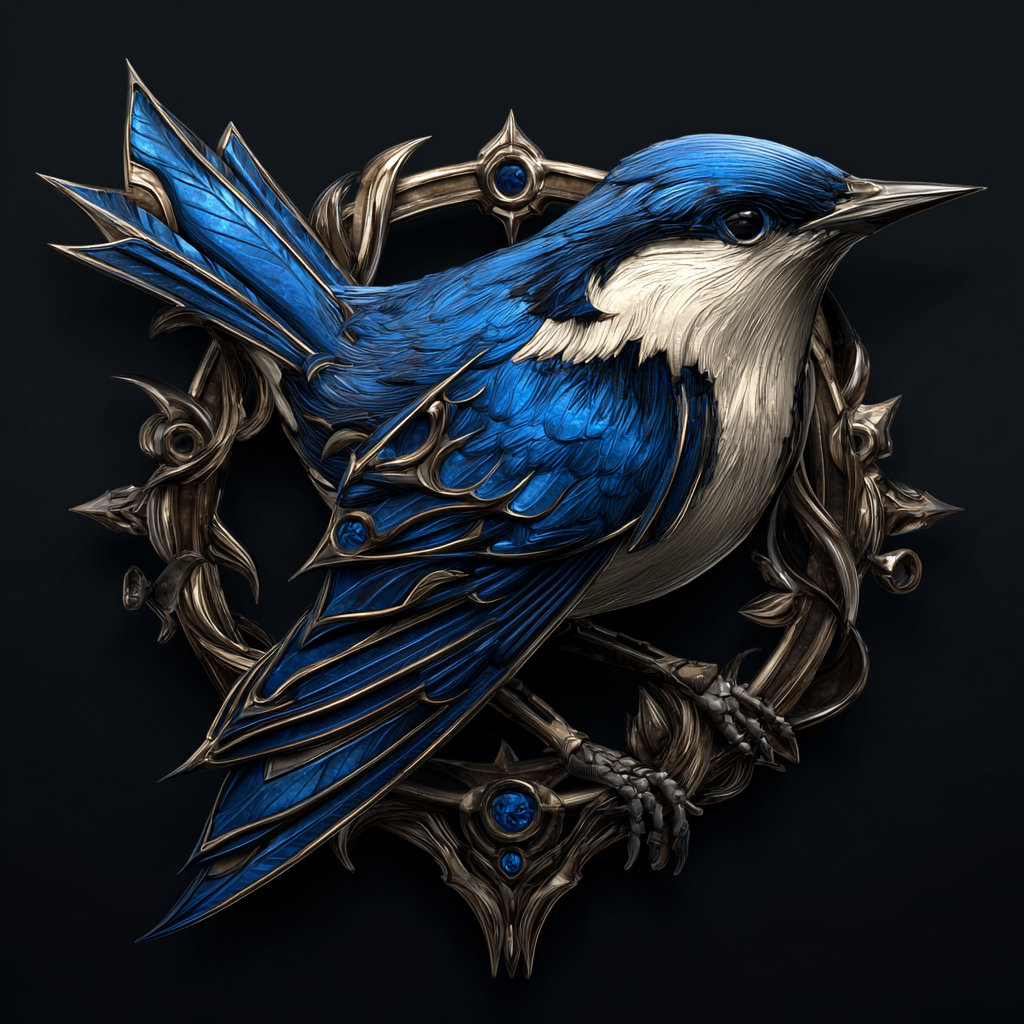
Jokull Horde
As an insurgent group in the Nordic Commonwealth, the Jokull Horde emerged from a secret laboratory on Europa, as engineered Radi-Mons with capabilities far beyond simple warfare. What began as an ambitious experiment in human evolution has evolved into a formidable force since 2284, now operating under the enigmatic leadership of Dagny Fjeld across the frozen reaches of the Seven Realms.
Distinguished by their ice-adapted physiology and unique reproductive technology, their forces include the adaptable Nordgård, the intelligent Fenormr, the mighty Krabba, and the transcendent Ísmarr—humans transformed into shape-shifting beings capable of surviving environments that would destroy baseline humanity.
Under Dagny Fjeld’s leadership, they represent a force whose true potential—whether for transcendence or destruction remains to be seen. The creatures that comprise the Jokull Horde are predominantly converted from Earth species native to Scandinavia and the extreme arctic regions of the Seven Realms. They possess an exceptional aptitude for surviving in frigid environments, both terrestrial and aquatic.
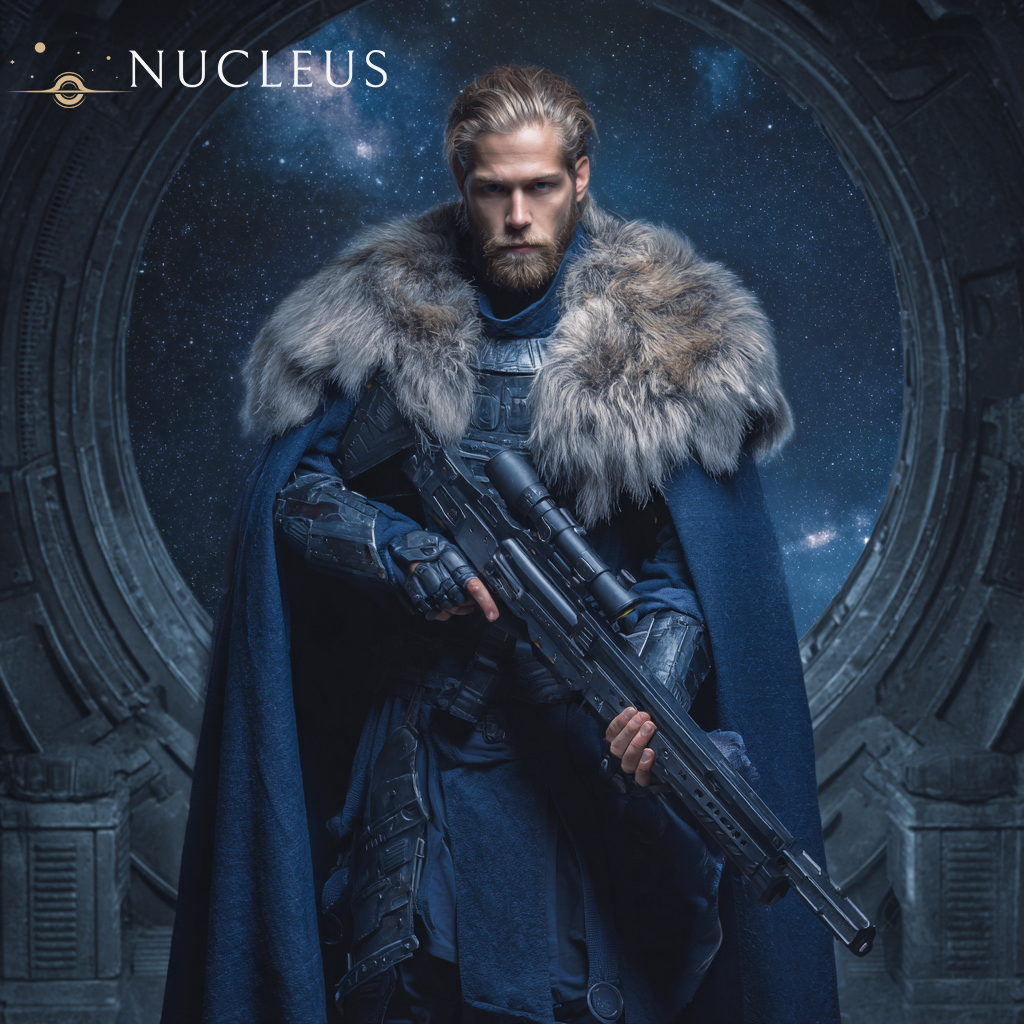
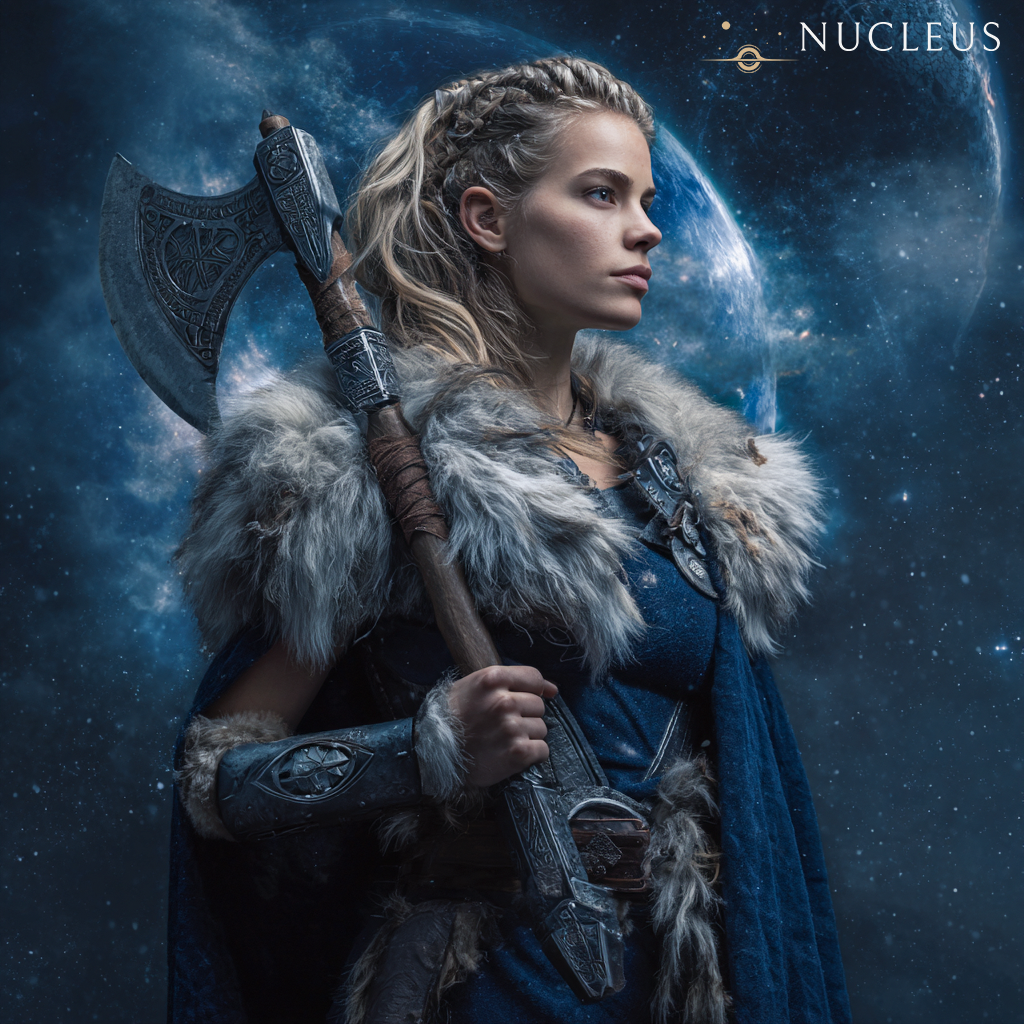
Nordgård
Before the Fenris outbreak of 2284, Nordgård was the proud title given to the Nordic Commonwealth’s citizen-soldiers—militia defenders of Europa, Titan, and the frozen homesteads scattered across ice moons in the Seven Realms.
When Princess Dagny Fjeld raised her banner and the Jokull Horde emerged as resistance against Fenris tyranny, thousands of Nordgårds joined her cause. They brought their weapons, their families, and their oaths. The term Nordgård shifted that year from describing Commonwealth soldiers to meaning something deeper: human guardians who stand alongside Jokull Radi-Mons as the last defenders of Nordic pride and freedom.
Clad in thick fur cloaks harvested from Europan ice bears and reinforced with salvaged composite plating, Nordgårds blend historical aesthetics with practical necessity. The furs provide insulation against vacuum exposure and blizzard winds, while their dark blue tactical gear beneath accommodates modern warfare’s demands. They wield Anti-Gravity Bolt-Action Rifles (AGBAR), and carry axes or hammers for close quarters. This dual armament reflects their role: versatile defenders capable of holding defensive lines with disciplined volleys or charging into melee alongside Krabba packs.
Most Nordgårds lack psionic abilities, relying instead on training, terrain knowledge, and coordination with Radi-Mon allies. They communicate with Fenormr through simple Jöturmál. In combat, they form the anchor around which Jokull forces organize: Grávombs resupply their ammunition, Krabba provide mobile cover in Skjold stance, and Glacierwurms tunnel routes for ambushes they execute. The most skilled among Nordgårds also learn how to ride Krabbas and Glacierwurms in combat.
Their loyalty to Dagny Fjeld stems from shared conviction: that Nordlings built something worth preserving, that it’s worth fighting to reclaim. They call themselves the last Nordgårds with defiance. Every rifle shot, every axe swing, every moon they hold against Fenris proves the old ways endure.
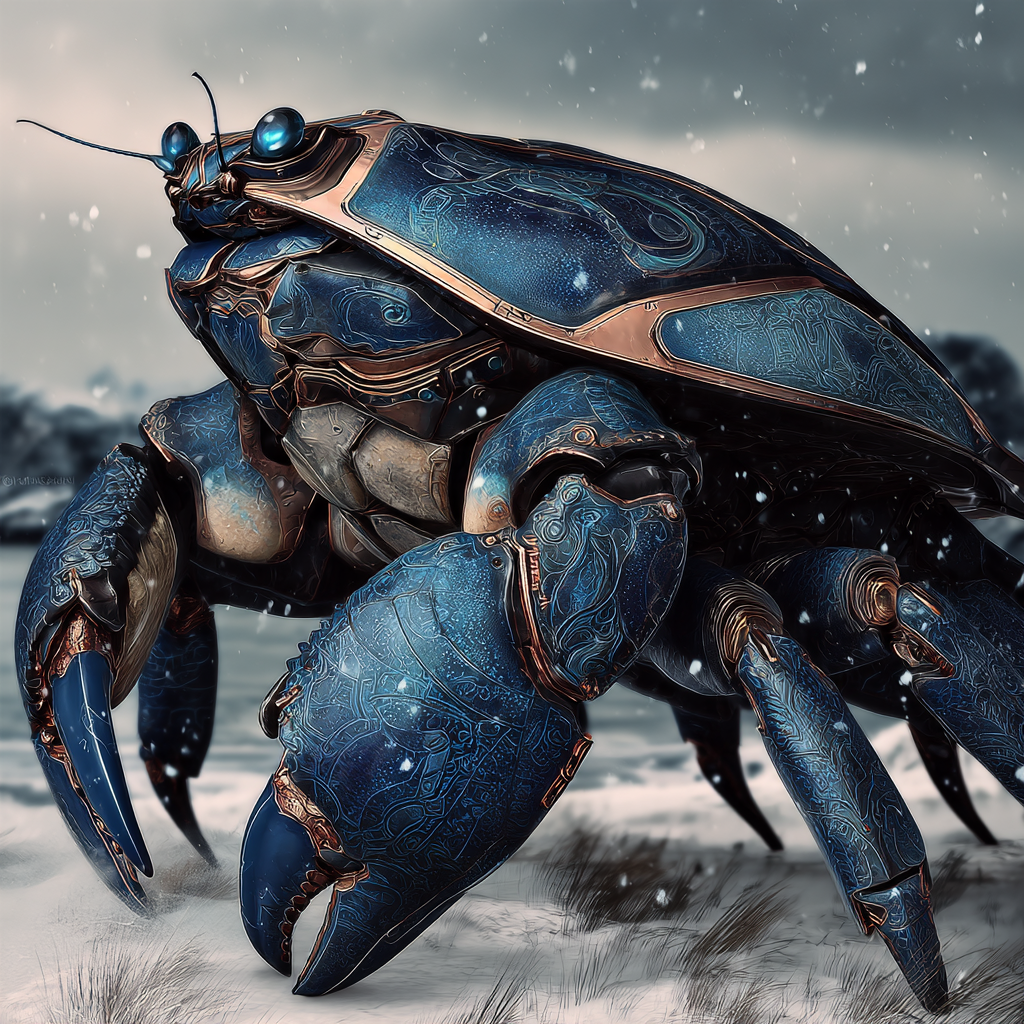
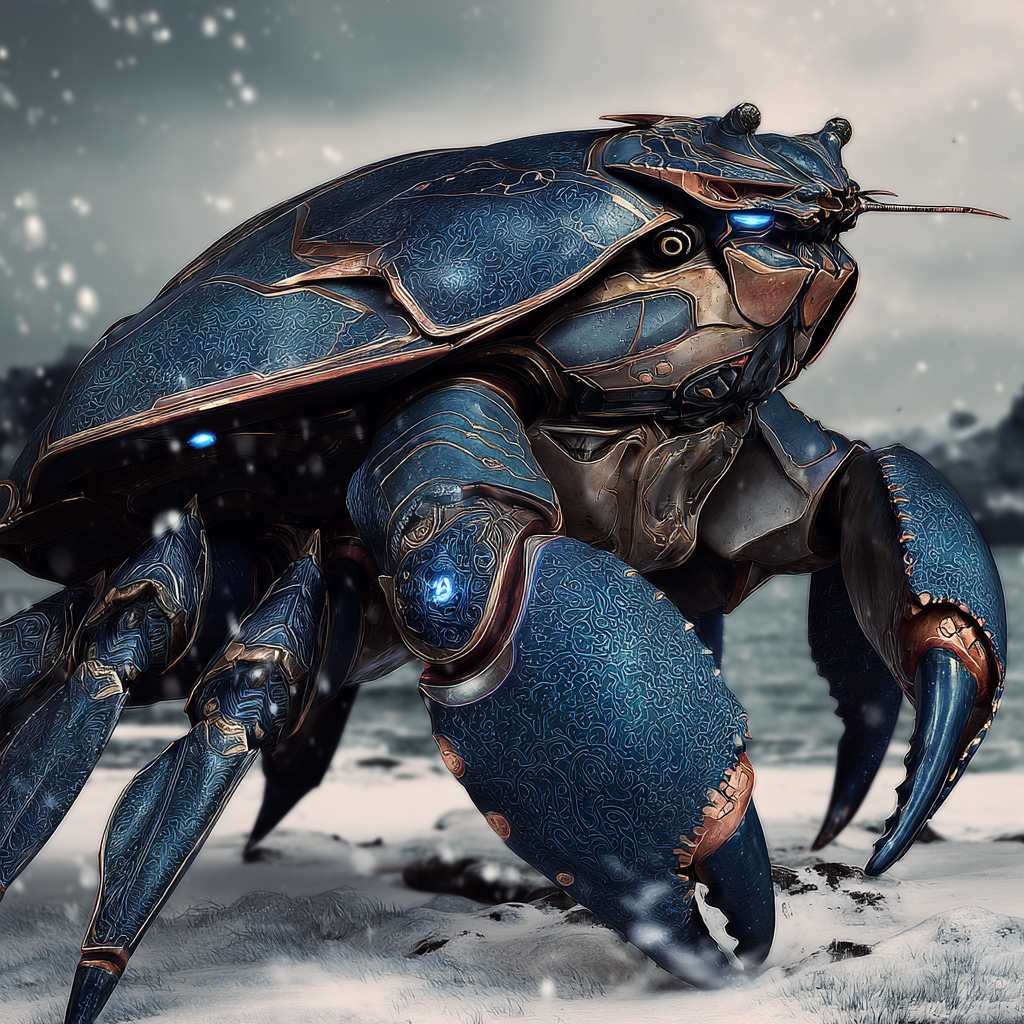
Krabba
The Krabba serve as the Jokull Horde’s living bulwarks, armored bastions around which entire battle formations coalesce. Resembling giant crabs the size of compact vehicles, these Radi-Mons possess shells of deep sapphire blue etched with intricate Norse knotwork. Unlike the expendable swarms fielded by other Hordes, Krabba are cultivated as elite shock troops, each one a significant investment of resources and training.
Their shells consist of layered chitin reinforced with crystallized Zephyrium deposits, creating armor that can withstand sustained gauss rifle fire and deflect most melee weapons. Krabba advance at a steady, relentless pace, their six legs carrying immense weight with grace. In combat, they position themselves at chokepoints or lead charges, their strong claws designed for controlling space: pinning enemies, deflecting attacks, and creating safe zones where Nordgårds and lighter Radi-Mons can operate.
What distinguishes Krabba from mere beasts is their intelligence. They understand tactical commands in Jöturmál, coordinate with allied units through low-frequency clicks. Older Krabba develop distinct personalities: some aggressive and eager to engage, others patient and defensive. Nordgårds speak of their assigned Krabba the way other cultures speak of horses: with respect and care.
Advanced Nordgård units train for years to ride Krabba into battle. Mounted Nordgårds gain elevated firing positions and mobility across terrain that would bog down infantry, transforming Krabba from mere tanks into mobile fortresses. The sight of Nordgårds charging on Krabba-back, fur cloaks streaming and axes raised, has broken enemy formations before contact.
After battles, Nordgårds tend to their Krabba with the same care they give their rifles: cleaning shell surfaces, checking for cracks, ensuring proper nutrition. Fallen Krabba receive funeral rites, their shells harvested to forge armor plates for the next Nordling warriors. This cycle of hono embodies the Jokull Horde’s philosophy: that Nordlings and their Radi-Mon partners are bound not by domination, but by shared sacrifice.
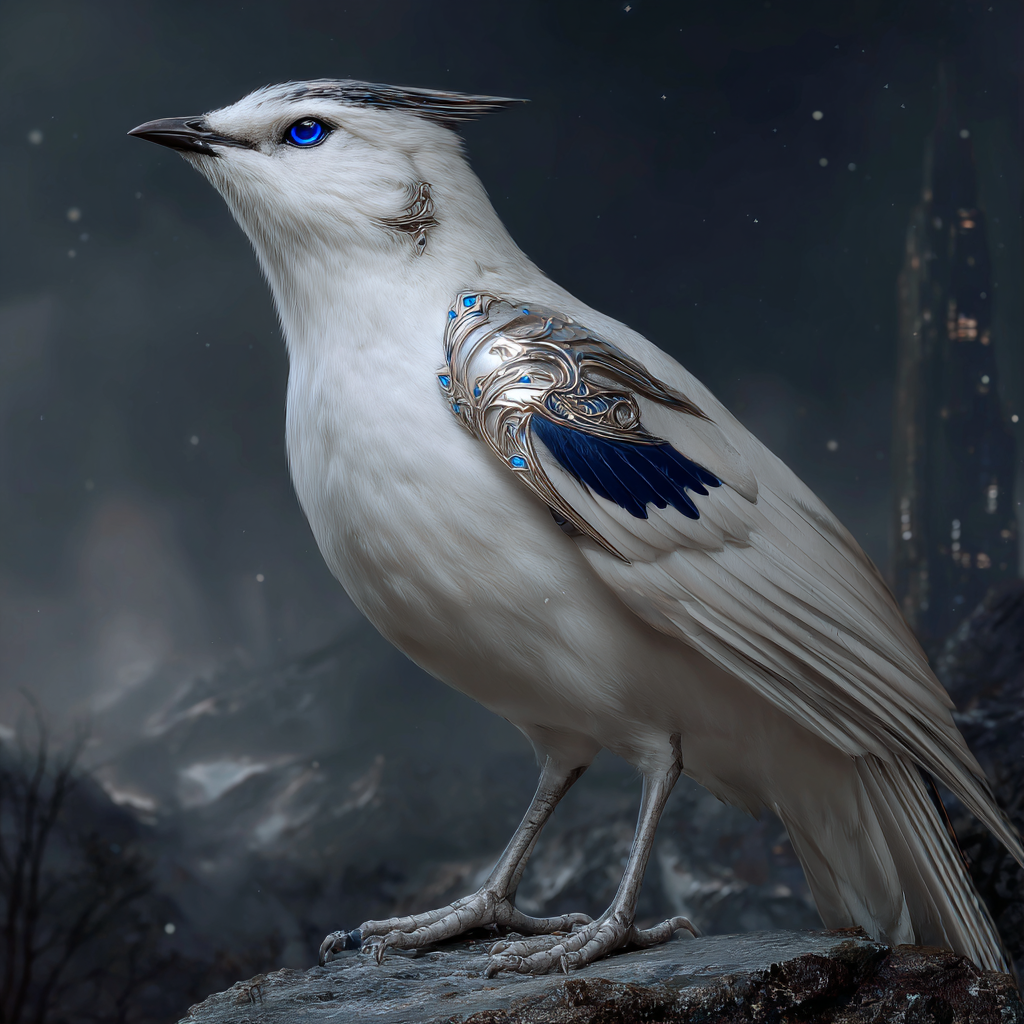
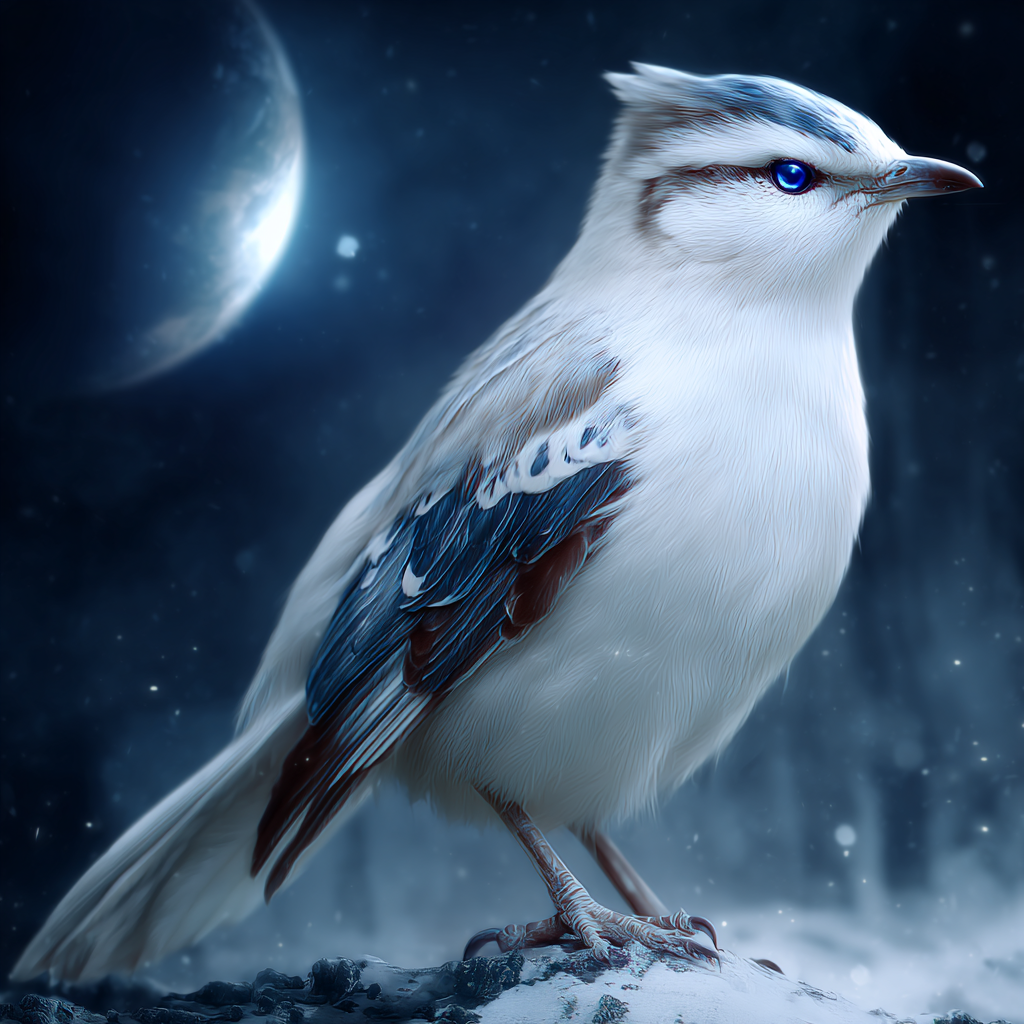
Moon Dipper (Månedykker)
Moon Dippers represent an unexpected elegance in the Jokull Horde’s brutal arsenal. Roughly the size of a hawk, these Radi-Mons evolved from Norwegian White-throated Dippers brought to Europa as genetic preservation samples. Their pristine white plumage, accented with blue-grey wings and distinctive glowing blue eyes, makes them appear almost angelic—until they attack.
Their combat effectiveness lies in versatility. Moon Dippers possess a specialized crystalline organ in their throat that flash-freezes moisture drawn from their breath and surrounding air, expelling these ice formations as high-velocity bolts capable of piercing light armor. More critically, they retain their ancestral diving behavior in weaponized form—they can phase through ice and water surfaces, disappearing into frozen lakes or thick snow banks, only to emerge dozens of meters away. This “frost-stepping” makes them maddeningly difficult to pin down.
Nordgard commanders use them as forward scouts, their Lunar-attuned calls warning of enemy positions across kilometers of frozen wasteland. Flocks of Moon Dippers excel at marking priority targets, their coordinated attacks applying layers of frost that slow enemies and make them vulnerable to heavier weapons. Cheap to field but fragile under sustained fire, they represent the Horde’s philosophy perfectly: strike fast, strike smart, and never let the enemy feel secure.
Science Behind the Frost Bolt: The specialized gland in Moon Dippers constantly cycle extremely cold blood through a crystalline organ (enriched with trace Helionite). As they breathe, moisture condenses in this organ and flash-freezes into tiny ice projectiles. When they “spit,” they’re essentially exhaling these formations at high velocity using pressurized air from specialized throat sacs. It’s hyper-efficient biological refrigeration turned into a weapon.
Size Justification: Hawk-sized (roughly 50cm wingspan, 1kg body weight) makes them large enough to be threatening but small enough to be agile. Real dippers are tiny, but Helionite mutation + Europa’s lower gravity would allow for larger frames while maintaining their diving agility.


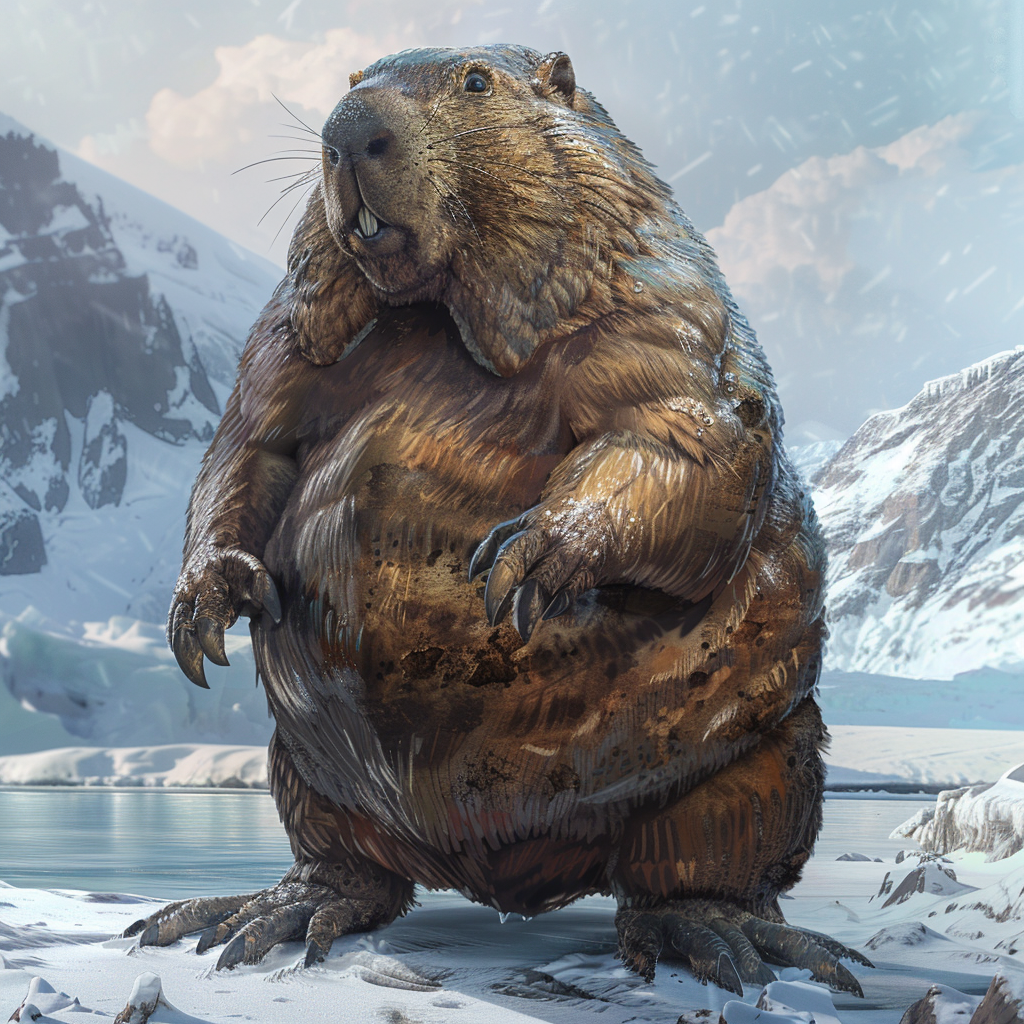

Grávomb
Pacifist creatures resembling large, armored hybrids of beavers and groundhogs, Grávombs serve as the Jokull Horde’s essential resource collectors and builders. Despite their imposing size, these gentle giants focus entirely on extracting Helionite, mining Zephyrium, and constructing vital structures within the Horde’s frozen territories. Their inherently non-aggressive nature makes them unique among Radi-Mons, dedicated to maintaining and nurturing their arctic environments.
Beyond their construction duties, some Grávombs have developed remarkable culinary skills, preparing meals suitable for both Radi-Mons and humans alike. This unexpected talent, combined with their industrious nature and peaceful disposition, makes them invaluable support units.
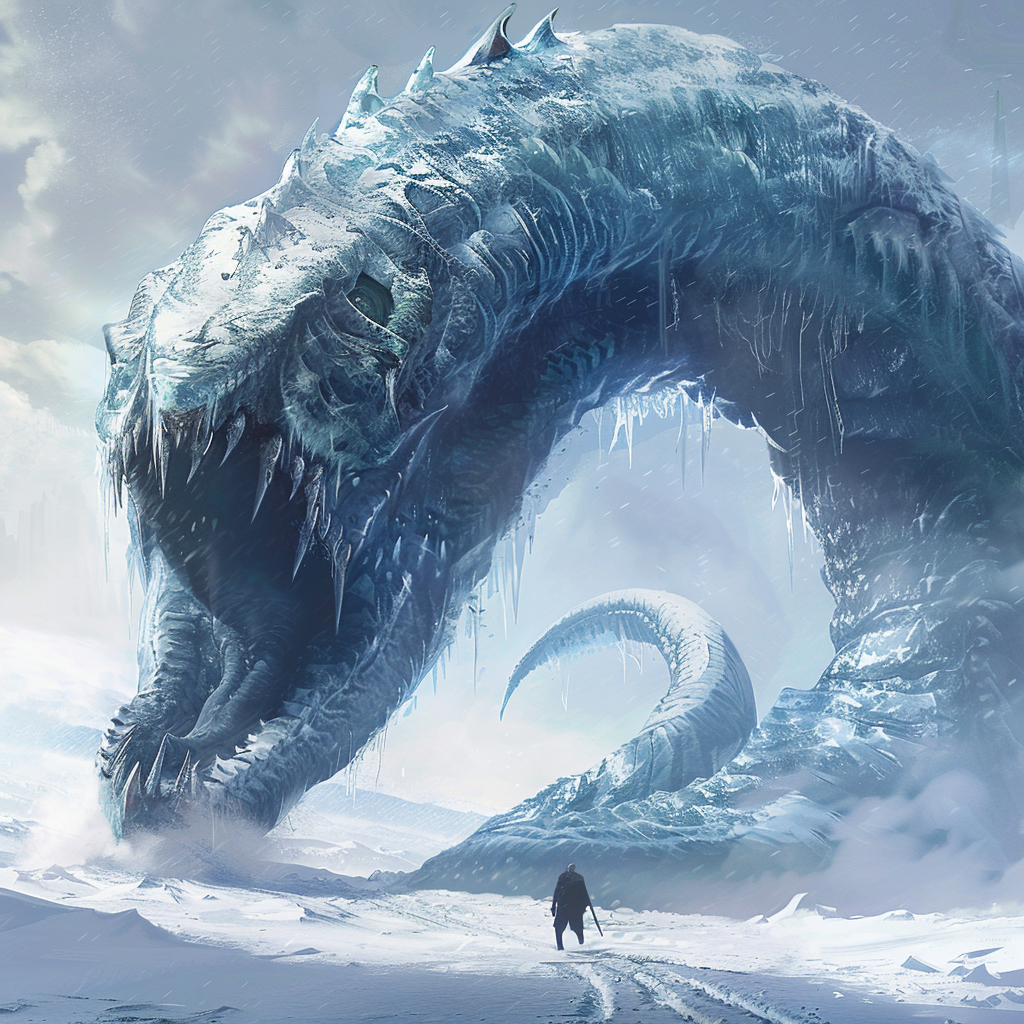
Glacierwurm
Massive siege units of the Jokull Horde, Glacierwurms are colossal worm-like creatures that tunnel through ice and earth with terrifying ease. These behemoths can unleash freezing mist breath attacks with extraordinary range, capable of reaching high-altitude targets and making them ideal for confronting large human battlecruisers or starships. Their ability to create strategic tunnels and ambush points, combined with their devastating anti-air capabilities, makes them invaluable assets against both ground fortifications and aerial armadas.
Due to the immense resources required for their creation and maintenance, Glacierwurms are deployed sparingly and only for critical engagements. While their size and power make them nearly unstoppable against large targets, they struggle against agile fighter jets that can exploit their slower reaction times.
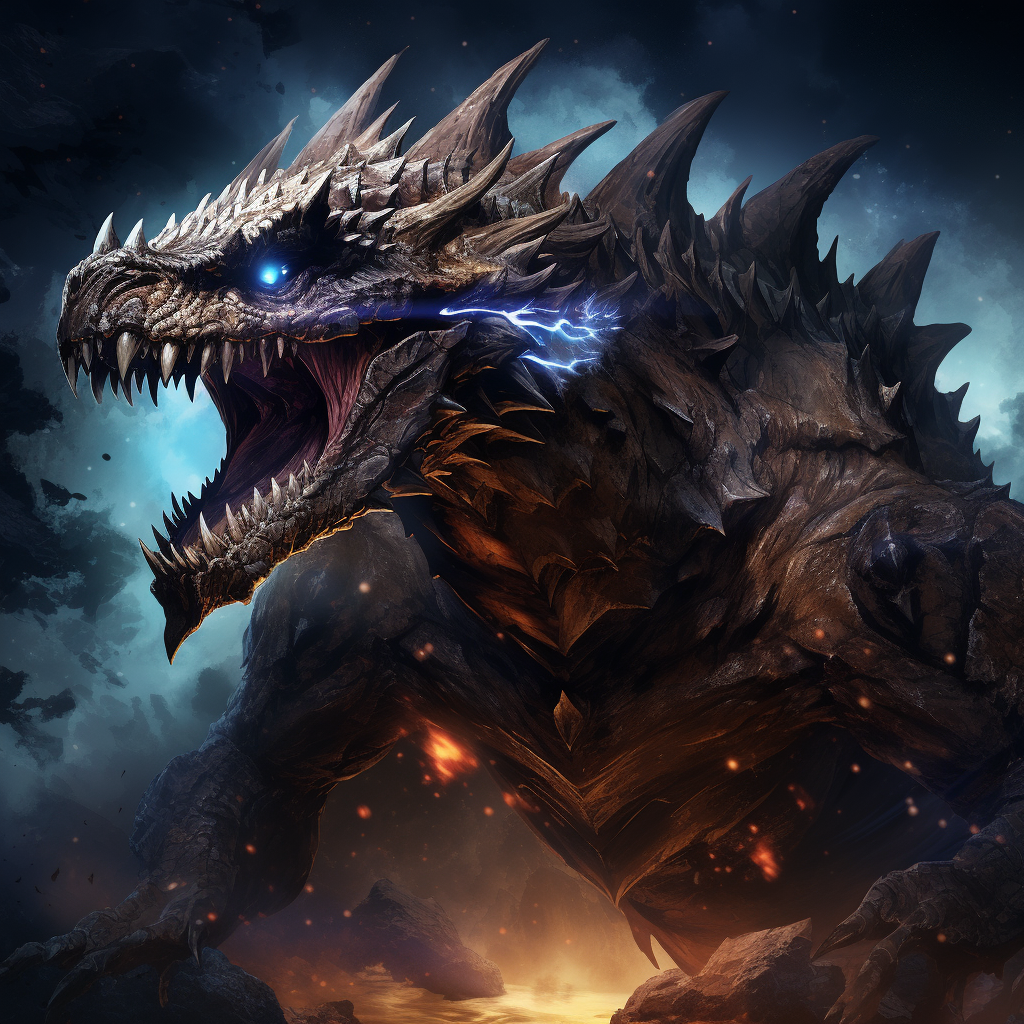
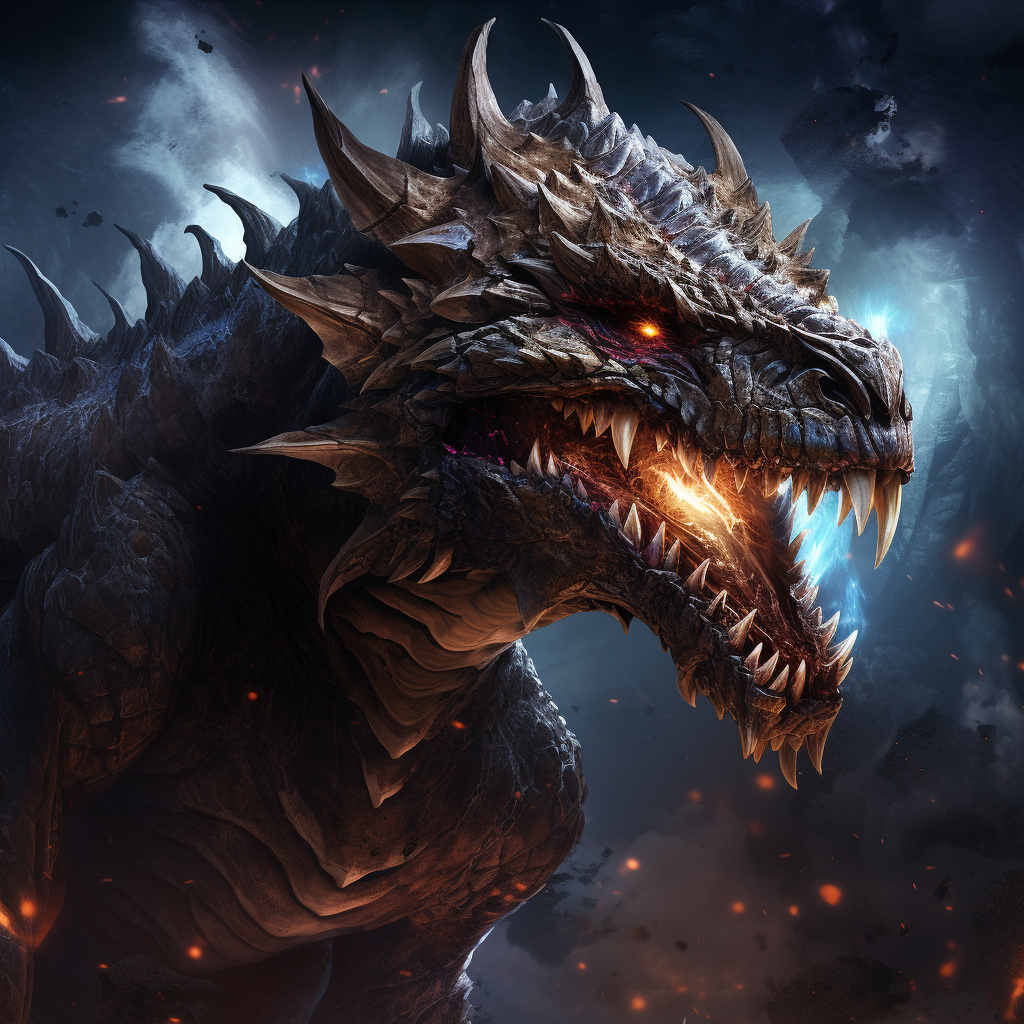

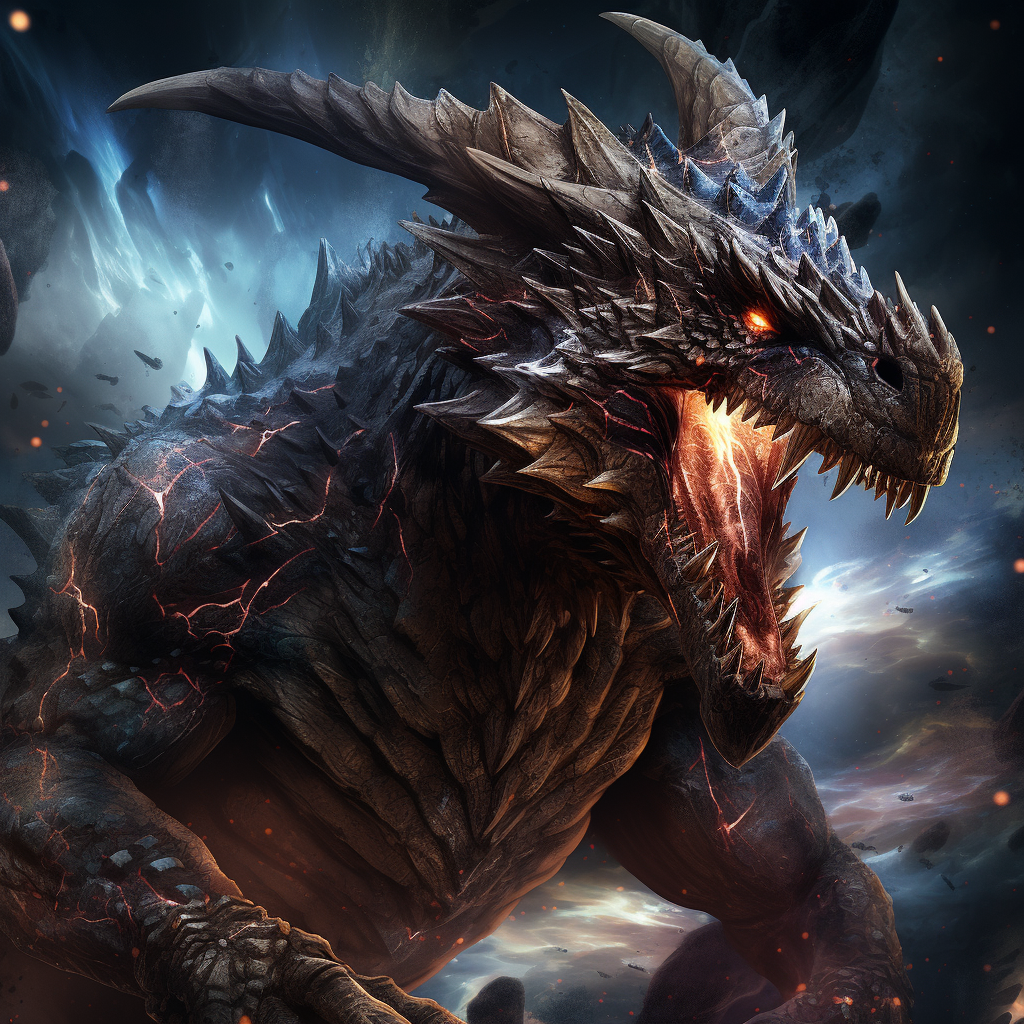
Diabolisk
The Diabolisk stands as a testament to the ancient and unfathomable forces that govern the universe. But physical prowess is only a part of the Diabolisk’s arsenal. As one of the oldest known types of Radi-Mon, it wields Eclipse and Lunar psionic spells with a natural mastery that belies its brutish form. Its roars are conduits for psionic energy, channeling destructive spells that lay waste to entire battalions.
An adult Diabolisk consumes those it slays, absorbing their life force to heal its own wounds, regenerating at a pace that makes it seem invincible. This creature is a harbinger of Nordic wrath.
Unlike most Jokull Radi-Mons which have their ancestries traced back to purely Scandinavian creatures, the Diabolisk’s genetic template was created from mixing those of Viviparous Lizard (found in Norway), Swinhoe’s Tree Lizard (found in Taiwan) and Komodo Dragon (found in Indonesia). Dagny Fjeld, the creator of Jokull Horde, never quite explained how she’s got any of the latter two into her laboratory.
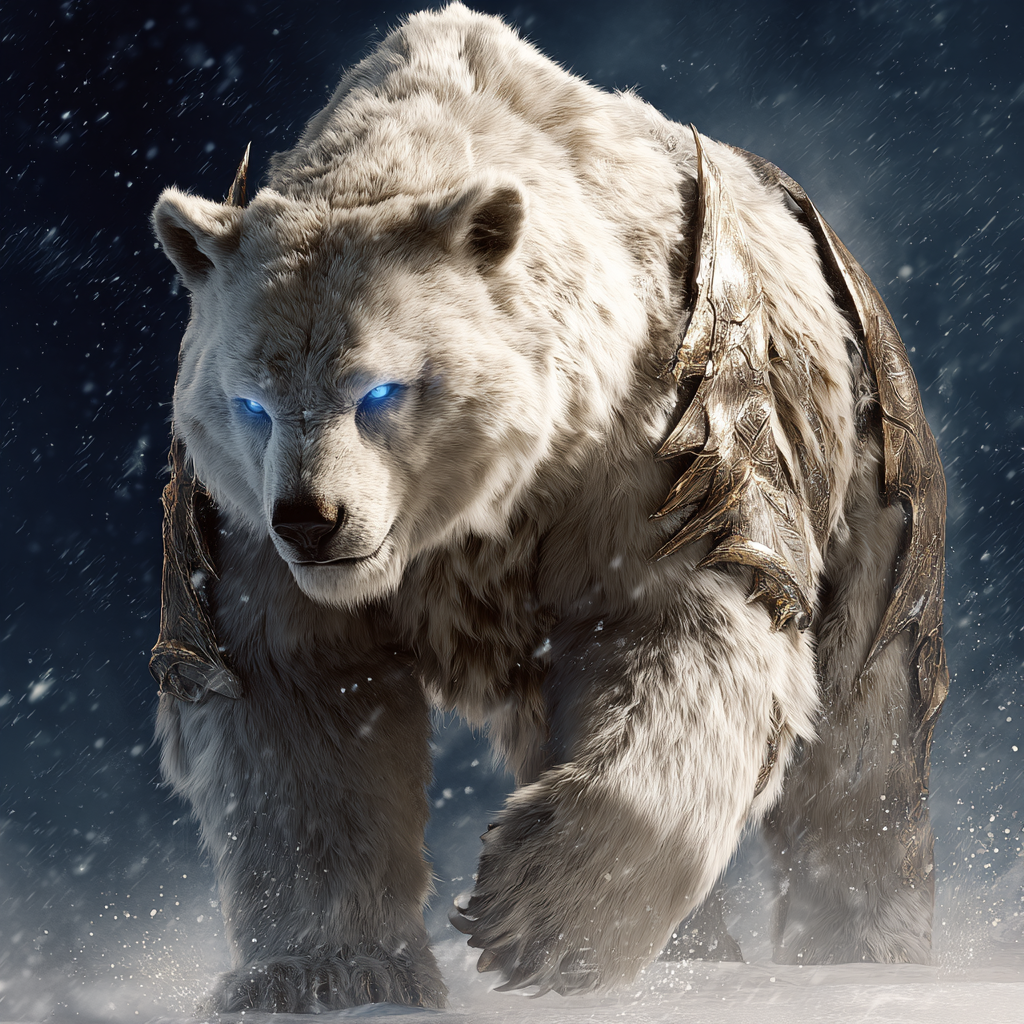
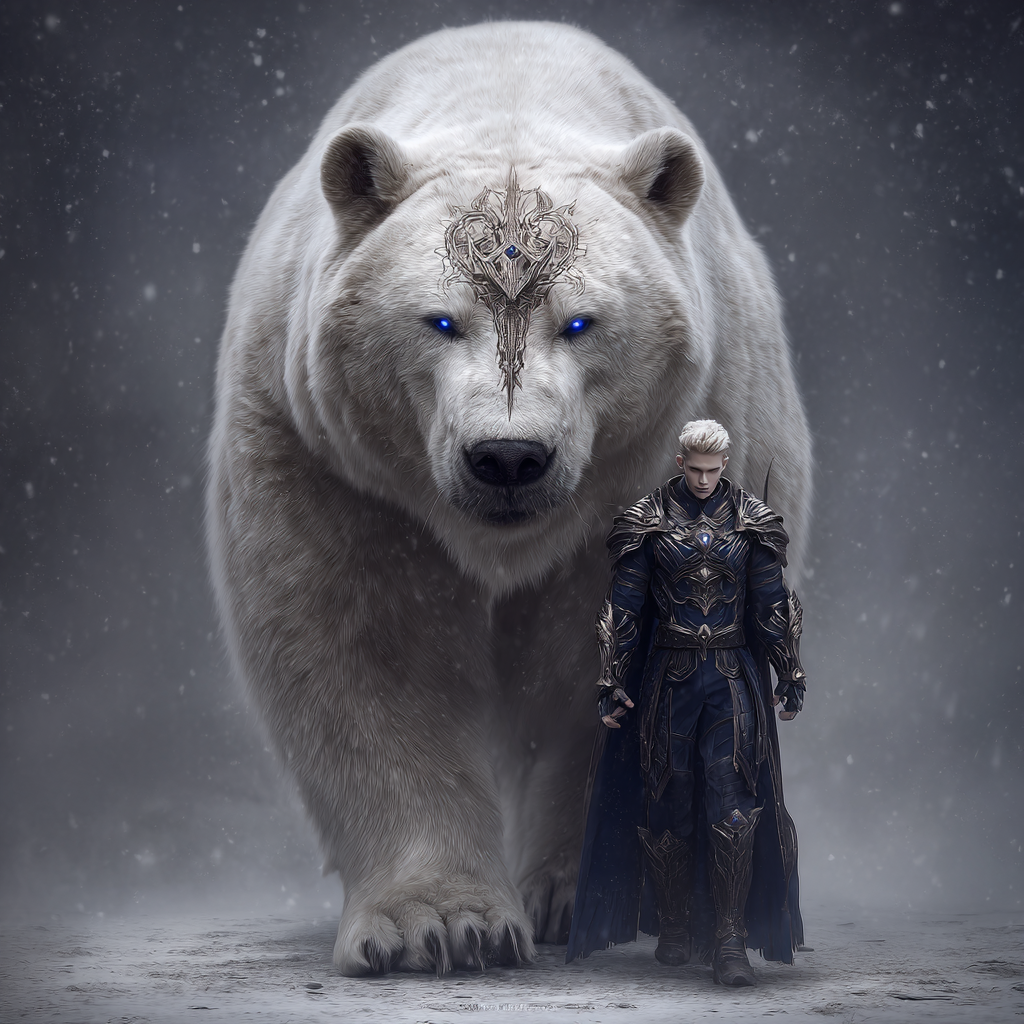
Storm Breaker (Stormbryter)
Storm Breakers are the Jokull Horde’s living siege engines, towering masses of white fur and bio-enhanced muscle that dwarf even the largest Nordgard warriors. Mutated from Europa’s sub-ice polar bears and enhanced with Helionite integration, these creatures stand three times the height of a human, with ornate neural plating grafted to their skulls as psionic resonance nodes which allow handlers to direct their fury.
Unlike the Glacierwurm’s focused siege capabilities, Storm Breakers serve as mobile fortresses. Their primary role is to absorb devastating punishment while leading frontal assaults, their massive frames drawing enemy fire away from lighter units. The neural interface allows them to maintain tactical awareness even under sustained bombardment, making them far more than mindless beasts. Their massive paws, each the size of a Krabba’s carapace, can shatter reinforced barriers with contemptuous ease.
The glowing blue eyes show Lunar psionic connection, allowing coordinated pack tactics despite their territorial nature. Too large and valuable for routine combat, Storm Breakers are reserved for critical engagements where the Horde needs an unstoppable vanguard. When a Storm Breaker charges, the ground trembles—and smart opponents either flee or focus every weapon they have on bringing it down before it crashes through their lines.
Stronger and/or elder Storm Breakers have a higher chance to enter a berserker state and go on a rampage, demolishing friends and foes alike. These mythical creatures are also expensive to nurture. For this reason, the Jokull Horde does not deploy Storm Breakers easily. When they’re sighted on the battlefield, the enemies know: Dagny intends to, and will win whatever battle comes.
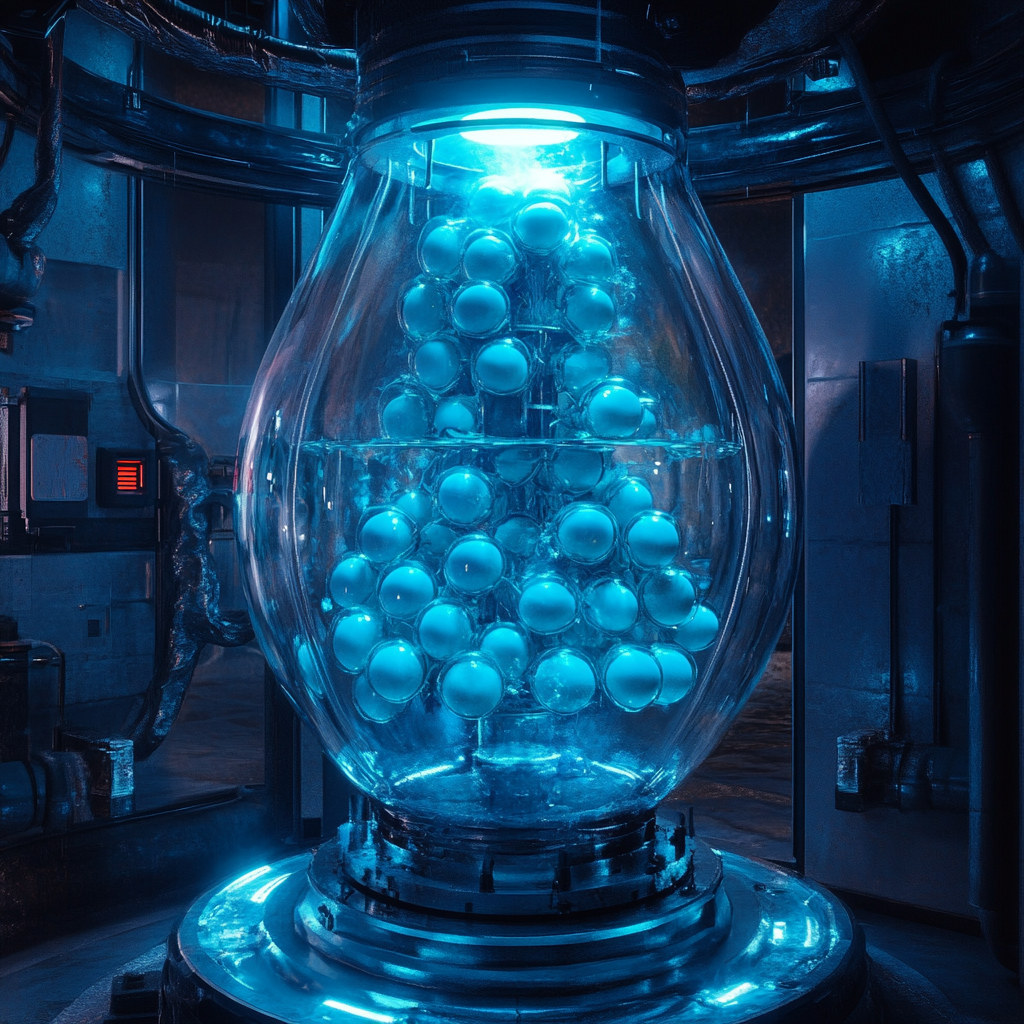
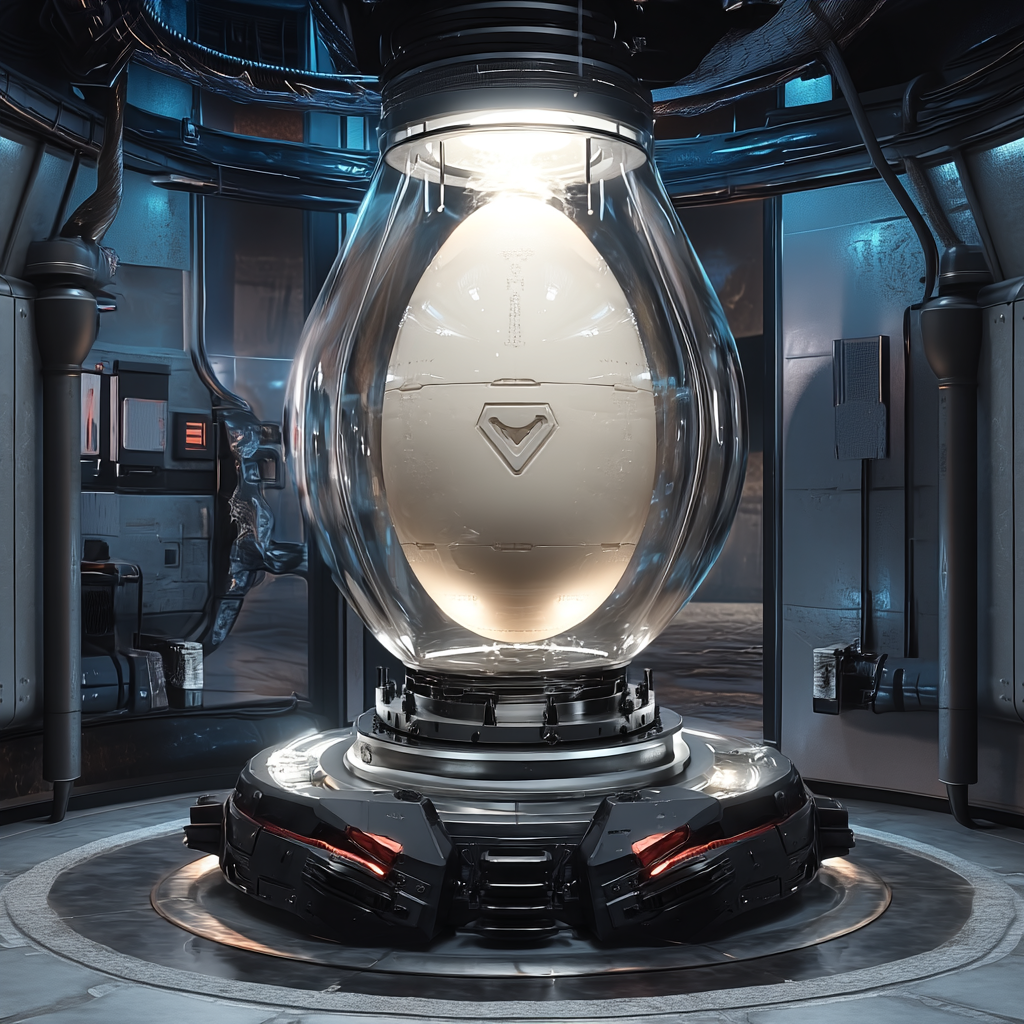
Hylki (Breeding Chamber)
The Hylki is Dagny Fjeld’s alternative to Fenris Vöxtr machines—clinical rather than brutal, efficient rather than agonizing. Each chamber consists of a reinforced glass vessel filled with nutrient fluid, dozens of translucent spheres suspended within and bathed in pale blue light. Unlike Fenris breeding, the Hylki requires no captives and inflicts no sexual torture.
How It Works:
The process requires extracted human ova. Only Dagny possesses the extraction tools, though rumors suggest Ivar Lindqvist has access. Once extracted, the ovum’s state determines its use:
Unfertilized Ovum → Can be replicated extensively → Each copy becomes a Radi-Mon
– Cultivation time: 2~5 weeks, depending on creature type
– Produces: Krabba, Fenormr, Grávomb, Moon Dipper or other Jokull Radi-Mons
– Output: Lower than Fenris methods, but requires no ongoing captives
Fertilized Ovum → Cannot be replicated → Becomes one human child
– Gestation time: 9 weeks (instead of 9 months)
– Child emerges: Physical age ~6 years old, actual age ~9 weeks
– Fully developed speech and motor skills, but emotional age matches chronological age
– Side effects: Lifelong emotional instability, dramatically increased psionic potential
Nordling Exclusivity?
Dagny claims the Hylki “only works on Nordlings” due to unique genetic markers. However, medical records in Jokull-affiliated hospitals suggests this devices functions identically for all human ethnicities. It is unclear whether Dagny maintains her claim to prevent other factions from acquiring the technology or to reinforce Nordling exceptionalism.
Purpose:
Born from desperation during the Fenris outbreak, the Hylki allows the Jokull Horde to sustain both Radi-Mon production and human population despite genocidal losses. It’s less horrific than Vöxtr breeding but hardly benign: accelerated children struggle with emotional regulation their entire lives, and women face social pressure to donate ova “for the survival of our people.”
Access to the Hylki and extraction tools remains tightly controlled. Only Dagny, Ivar, and a handful of trusted scientists can operate the system. No Radi-Mons or children are born without her approval.
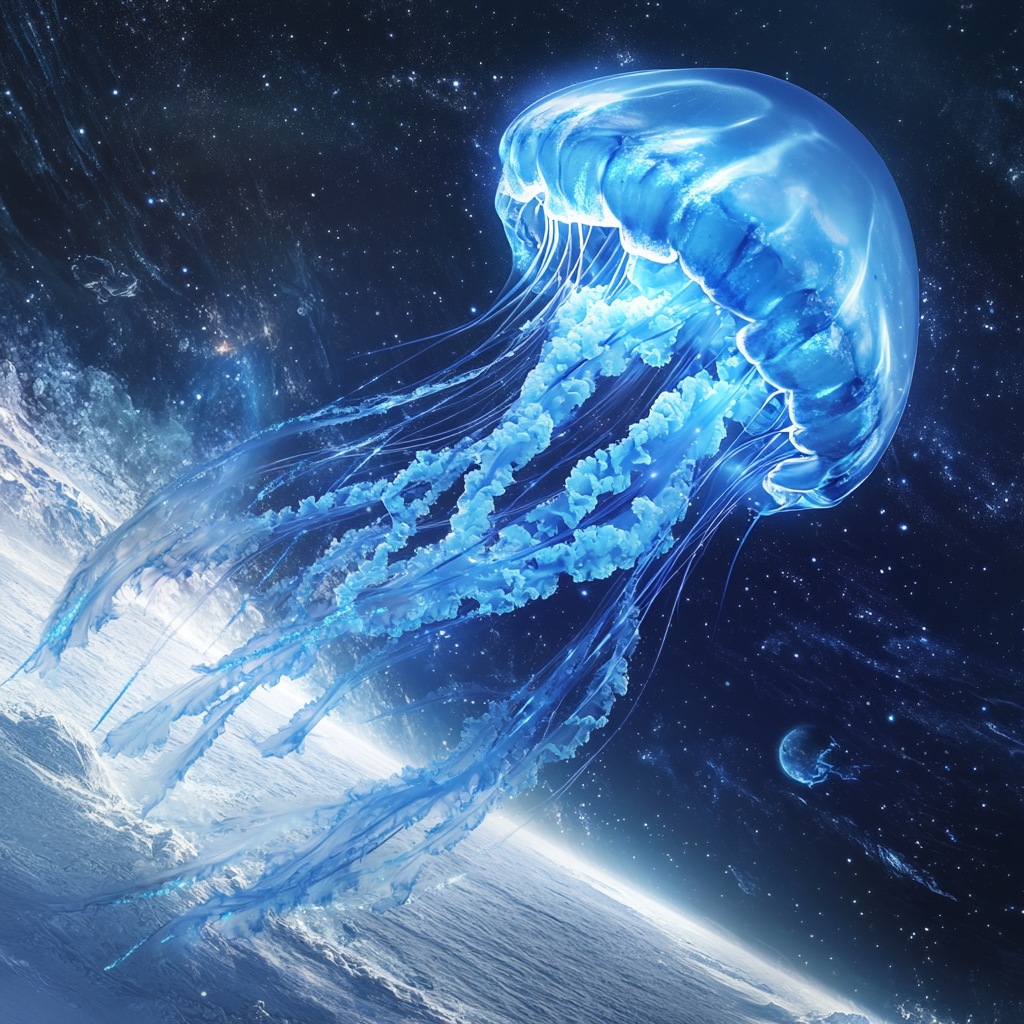

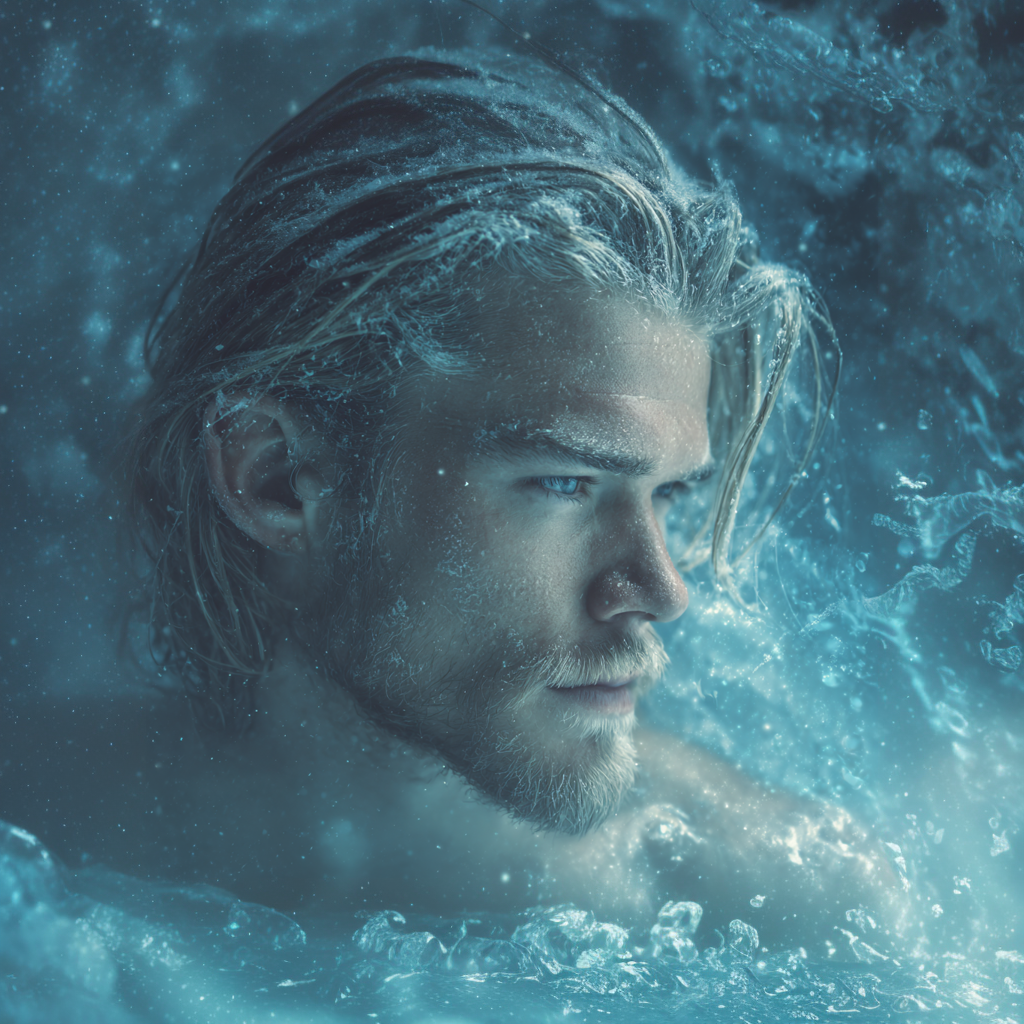
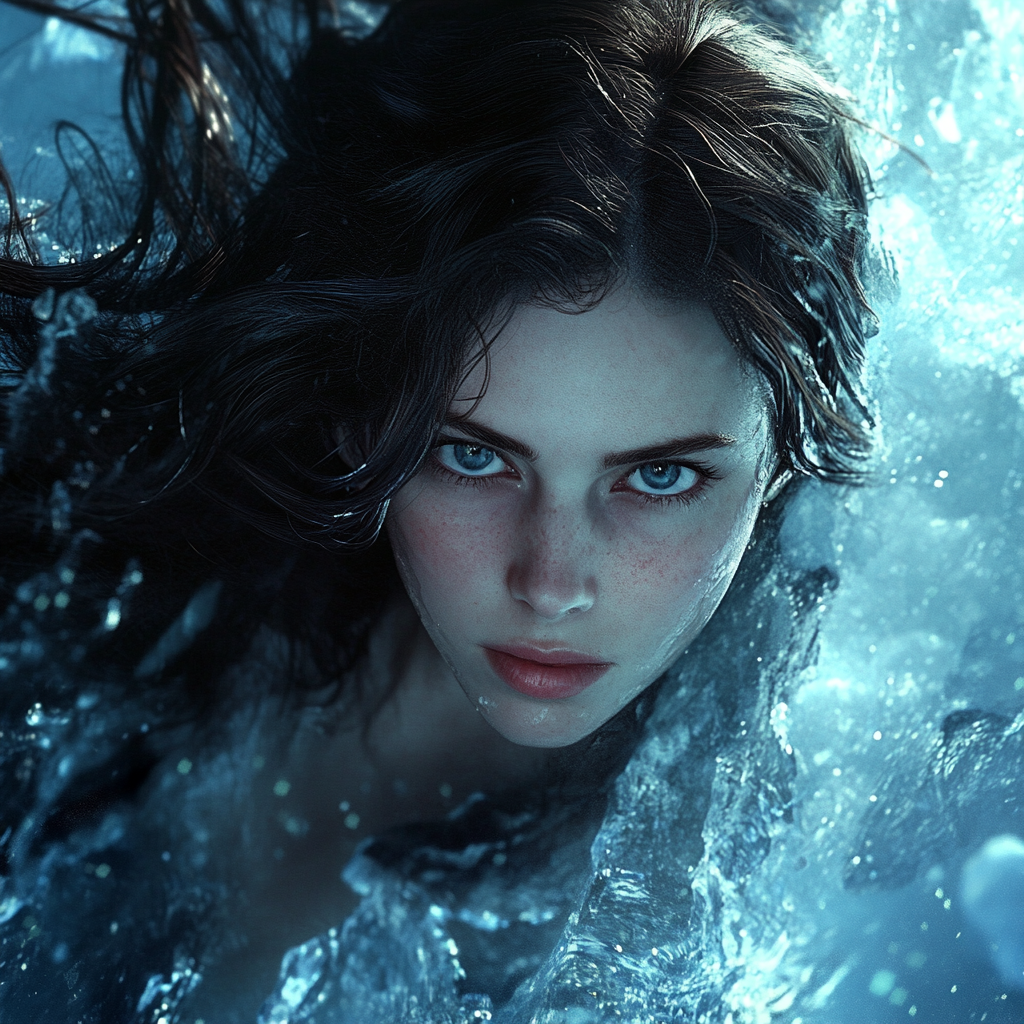

Ísmarr (Frostborn)
The Frostborn, or Ísmarr in Nordling tongue, represent radical experimentation—humans transformed through the Jokull variant of the Nucleus Virus into beings that transcend conventional biology. Unlike other Radi-Mon conversions, Ísmarr retain full human consciousness while gaining the ability to shift between three forms: a perfect human disguise with jellyfish-like internal composition, a massive ethereal jellyfish capable of spaceflight, and a versatile half-beast form combining human upper body with translucent oral arms. Their bodies, composed of 88% water with no conventional organs, grant them near-immortality and the disturbing ability to consume prey whole while absorbing their memories.
Human Form: In their human form, Ísmarr appear completely unchanged from their original appearance, making them perfect infiltrators. However, this familiar exterior conceals a radically altered interior. The Jokull virus replaces their entire internal physiology with a jellyfish-like composition—approximately 88% water, with no bones, brain, heart, or conventional organs. Their muscles become semi-liquified yet remain functional, and their blood is replaced by a translucent body fluid that serves as both their consciousness medium and life force.
This means Ísmarr no longer need to breathe conventionally and can remain submerged underwater indefinitely. They have no body temperature or vital organs to target, making them difficult to kill. Their consciousness, distributed throughout their body fluid rather than localized in a brain, allows them to survive injuries that would kill normal humans. They can withstand extreme temperatures and environments while naked, though most wear clothing or fur cloaks for social convention and identity.
Full Beast Form: When assuming their true Radi-Mon form, Ísmarr transform into massive, ethereal jellyfish-like creatures. In this state, they can fly through space and penetrate planetary atmospheres without harm. Their translucent bodies emit a mystical blue aura, and they can manipulate ice and moisture at a molecular level through quantum crystallization.
Reproduction and Sexuality: Ísmarr cannot reproduce. All procreation within the Jokull Horde remains centralized through the Primarch’s use of the Vöxtr. Regardless, due to the concentrated neural nodes and heightened sensitivity of their transformed lower body, many female Ísmarr utilize Half Beast form for sexual encounters. The increased stimulation surpasses conventional human anatomy, leading to a hypersexual culture among Ísmarr despite their inability to reproduce. Male Ísmarr usage patterns are less documented, though combat applications appear more common.
Regeneration and Weaknesses: While immortal through cellular regeneration, Ísmarr can still be killed through complete dehydration or overwhelming physical trauma that disperses their body fluid beyond recovery. They must periodically immerse themselves in water to maintain cellular integrity.
The Ice Marriage
Ísgift
When an outsider seeks to marry a Nordling, the Jokull Horde demands proof that transcends words or intentions. The Ísgift serves this purpose—a ritual that tests whether the petitioner can endure what Nordling culture demands, and whether their Nordling partner will invoke ancestral authority to bring them into the fold.
The trial takes place on Europa’s surface. The Nordling partner uses Lunar frost magic to create a sphere of killing cold around both participants, temperatures plunging far below what the natural environment provides. The cold is actively maintained, a manifestation of Nordling cultural power channeled through their bloodline’s gift.
Within this glacial envelope, stripped of all protection, the couple must consummate their bond. The outsider must maintain arousal, focus, and connection despite numbness spreading through their limbs, despite every survival instinct screaming to flee. The Nordling partner must hold the frost steady without mercy, watching their beloved suffer while resisting the urge to ease the cold. To weaken the ritual is to fail. Both must endure or both are rejected.
A Frostborn witnesses observe from a distance, their alien senses reading pheromones and electromagnetic signatures to verify authenticity. Arousal cannot be faked under these conditions.
By conducting the Ísgift, the Nordling partner makes a public declaration: they are invoking their heritage, their psionic lineage, and their cultural standing to endorse an outsider into Nordling society. If the outsider fails or dies, the shame falls on both. If they succeed, the Frostborn witnesses report back to Dagny Fjeld, and the union receives acceptance from the Jokull Horde—the true sons and daughters of Northern Blood.
Survivors emerge frost-burned and marked, their skin bearing temporary patterns from extreme cold exposure. These marks fade over weeks but leave faint scars—proof of passage recognized by all Nordlings. Those who die are mourned by their partners and cremated according to Nordic tradition, their ashes scattered on Europa’s ice.
Outsiders who pass the Ísgift are granted full Nordling status within Jokull society: the right to purchase property on Europa and other Jokull-held moons, to own businesses, and to move freely through territories that would otherwise bar foreigners. Their children, regardless of mixed heritage, are raised as Nordlings with the same privileges. However, the Nordic Commonwealth remains contested between the Fenris and Jokull Hordes, each claiming legitimate rulership. Whether this Nordling status holds legal authority beyond Jokull territories, or merely represents Dagny Fjeld’s assertion of cultural legitimacy against Skarn’s claim, remains politically ambiguous.
The ritual reflects Jokull philosophy: devotion must be proven through suffering, cultural belonging must be earned through trial, and love means nothing if it breaks under pressure. It is brutal and utterly without compromise, but it judges will and commitment over bloodline. Perhaps this is proof that Dagny the Jokull Pricess does not care as much about heritage as her words suggest. Perhaps she simply demands the ones seeking her kin’s acceptance to stand next to the Nordlings and endure Hell together when the dark days arrive.
